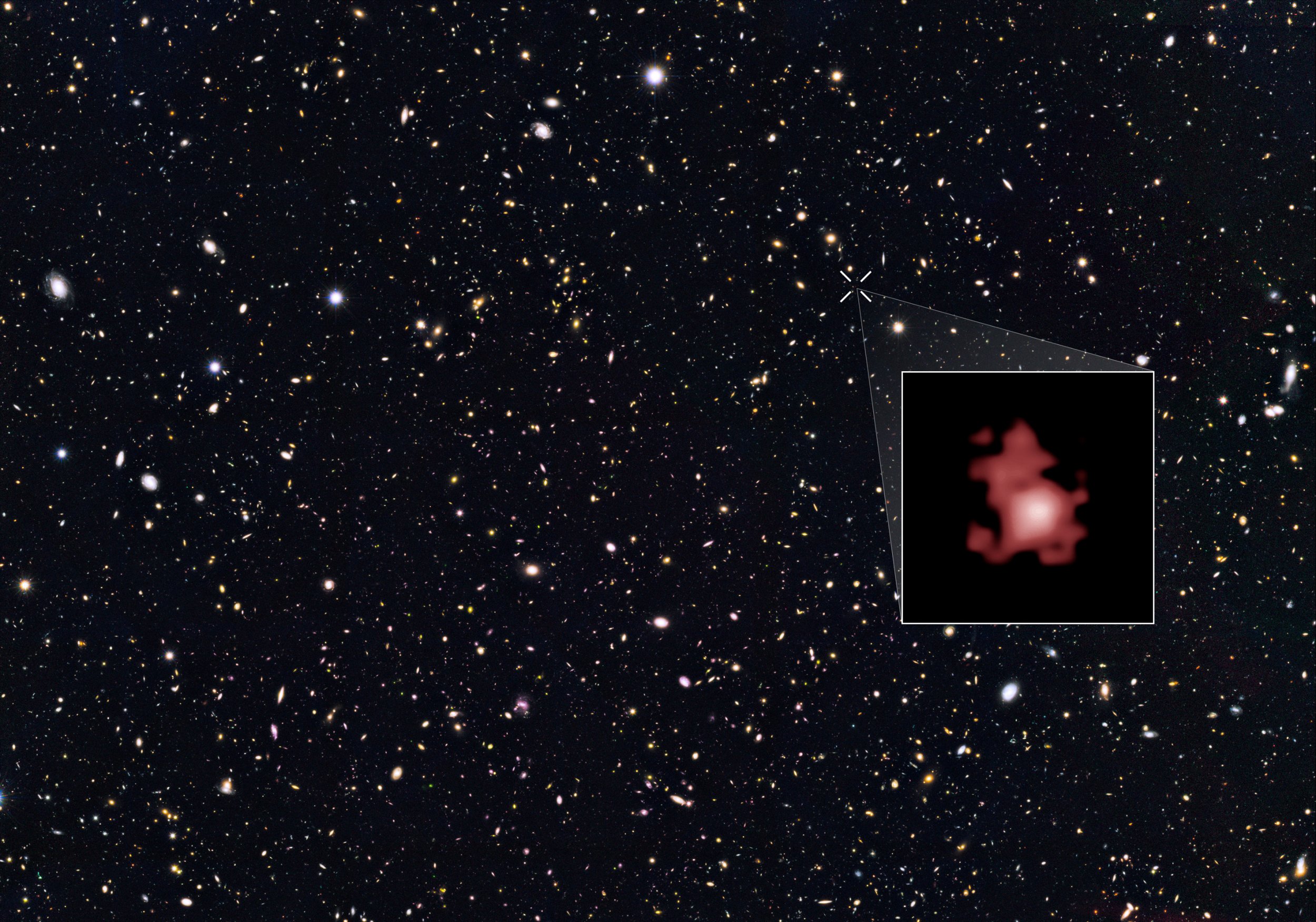
On Thursday NASA and the European Space Agency released the ultimate photo throwback: an image of the farthest galaxy ever seen. A red dot above the big dipper, the spot is 13.4 billion years old, putting it just 400 million years after the Big Bang, mere minutes on the cosmic clock from the start of the universe.
"We've taken a major step back in time, beyond what we'd ever expected to be able to do with Hubble," said Yale University's Pascal Oesch in a press release. "We managed to look back in time to measure the distance to a galaxy when the universe was only 3 percent of its current age."
To show how deep they looked into space to find the young galaxy, named GN-z11, NASA produced this video that dives backward toward the universe's beginning.
Although it's only a faint smudge to our eyes, GN-z11 is actually quite bright considering how far away it is. That's because though it's 25 times smaller than the Milky Way, it produces new stars 20 times more quickly, at a rate of 24 a year. In other words, it's a compact ball of energy, relative to the rest of space.
Astronomers pushed the Hubble Space Telescope to its limit to take the picture. They used its Wide Field Camera 3 to find the galaxy's distance from us, a much more precise yardstick than used before in estimates for anything so remote. As objects get farther away, the light they give off stretches into the longer wavelengths at the red end of the spectrum. The camera reads this effect, called redshift, to make its measurement.

The new measurement breaks a record set in 2012, when the telescope captured a dwarf galaxy that was 13.3 billion years old. And it positions us at the end of the dark ages and the start of the reionization era, the moment when the first galaxies formed out of a fog of hydrogen gas.
Uncommon Knowledge
Newsweek is committed to challenging conventional wisdom and finding connections in the search for common ground.
Newsweek is committed to challenging conventional wisdom and finding connections in the search for common ground.
About the writer
To read how Newsweek uses AI as a newsroom tool, Click here.





